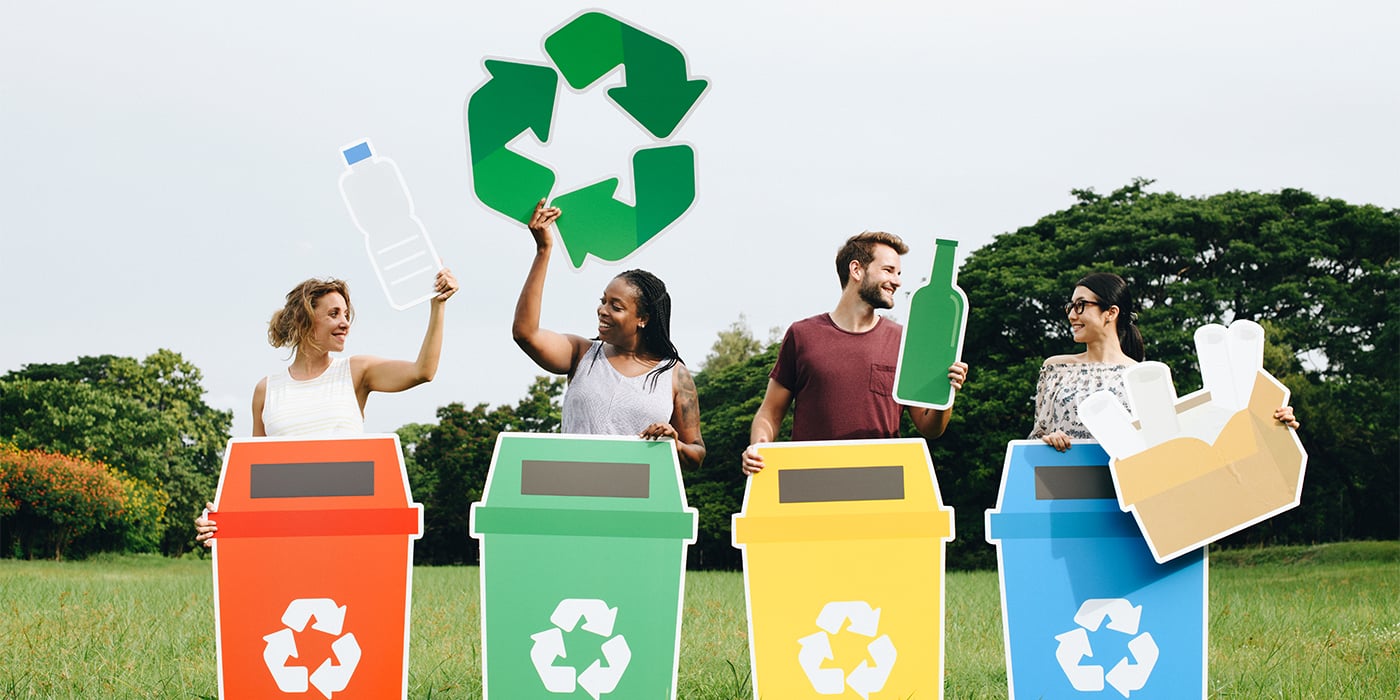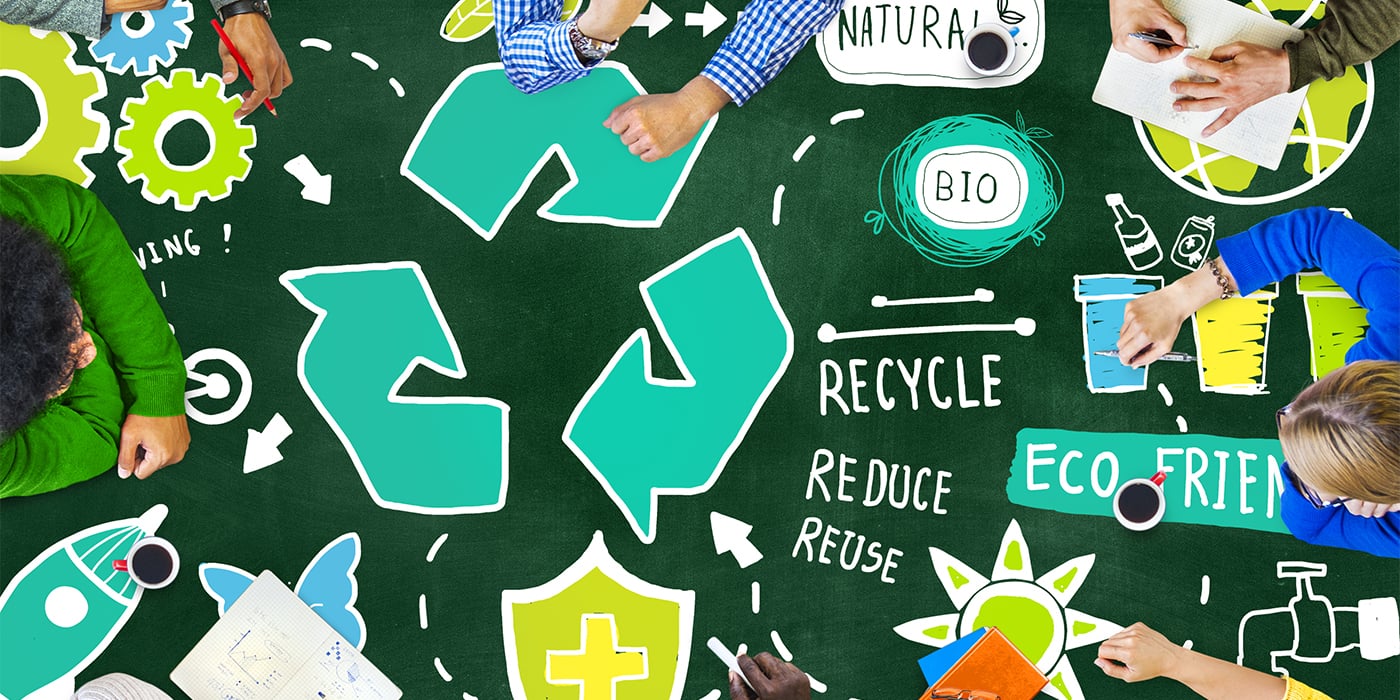
By: Caitlin Dimalanta | December 3, 2020
In 2018 the EPA reported a total of 292.4 million tons of trash collected, translating to roughly 4.9 pounds per person on a daily basis in the United States alone. Approximately 32 percent of this trash was either recycled or composted. This waste diversion statistic is an impressive feat. However, the trash being generated year by year is steadily increasing along with environmental and economical impacts.
These impacts can range anywhere from reduced oxygen levels of diverse habitats to toxicological threats to our wildlife through ingestion and entanglement. On top of the ecological effects, the cost of mismanaged waste can be substantial. In a 2012 an EPA study recorded that West Coast communities of the United States spend more than $520 million dollars annually to prevent trash from littering the ocean.
How can one do their part to combat these negative impacts and stay on path toward a greener and healthier future? A sound solution is a well-run recycling and waste diversion program which can in turn save you money on waste disposal costs by diverting recyclables and organics from a landfill. Additionally, a waste diversion program can help you meet government or executive orders and corporate recycling requirements and it communicates to your employees, customers and the community about your overall sustainability efforts and environmental stewardship.
What is the Difference Between Waste Diversion and Zero Waste?
Waste Diversion is defined by the EPA as “The prevention and reduction of generated waste through source reduction, recycling, reuse and composting. Waste diversion generates a host of environmental, financial and social benefits, including conserving energy, reducing disposal costs, and reducing the burden on landfills and other waste disposal methods.”
Zero Waste is defined by the Zero Waste International Alliance as “Designing and managing products and processes to systematically avoid and eliminate the volume and toxicity of waste and materials, conserve and recover all resources, and not burn or bury them. Implementing Zero Waste will eliminate all discharges to land, water or air that are a threat to planetary, human, animal or plant health.”

Green Facility Supply Solutions
When strategizing a waste diversion program there are multiple areas to consider inside and outside of a facility. Below are the recommended steps to starting your own waste diversion program.
- Select a Recycling Coordinator: A Recycling Coordinator conducts a waste audit and determines what can be recycled or otherwise diverted from the landfill.
- Conduct a Waste Audit: The waste audit is used to identify all recyclable materials which are currently being thrown away at your facility.
- Determine Which Materials to Collect: Coordinate your efforts with your city’s regulations and your waste hauler – now that you have completed your “dumpster dive”, what types of materials does your site generate that warrant collection? Have you identified materials such as glass, paper and cardboard? There is typically infrastructure in place to accommodate these materials. opposed to landfilled. Check with your local municipality for options in your area.
- Select Your Collection Contractor: Collection can be provided by a recycling company, collector or waste hauler. Many provide diversion rate statistics to help you measure your progress. Determine which vendor is best suited to help you meet your objectives.
- Design Your Collection System: Keep it simple! Pick containers and locations for collection which make them easy to use. Integrate the transfer of recyclables into the regular waste collection system, have a streamlined transfer system, and locate the storage/pickup area in a central location.
- Promote Employee/Tenant Participation: Educate your employees and building occupants, and celebrate waste diversion successes! Getting to zero waste takes teamwork, and it always helps to get everyone involved and making contributions to the overall effort.
Waste Diversion & Zero Waste in Business, Education and Government
Massive university campuses, towering business buildings, and extensive government facilities contain multiple areas in which waste diversion and zero waste solutions can be maximized. Managing both indoor and outdoor spaces can pose a big challenge for their operations and environmental service teams.
From classrooms to dining areas to gymnasiums, college campuses and other K-12 education facilities have many opportunities where waste diversion could help reduce trash and ultimately eliminate it transitioning to zero waste. Through waste management, universities like Cal State LA have committed to a sustainability plan that includes goals like achieving 90 percent waste diversion by 2026 and zero waste by 2036. Goals like these reduce unsightly overflows, eliminates problems with critters attracted to trash, eradicates potential injury from piled up trash and ensures a clean and healthy learning environment for its students and staff.
To assist with waste diversion and other sustainable objectives WAXIE delivers innovative educational facility maintenance supply, expert consultation and training that contributes to lower operating costs, enhanced public image as well as increased attendance and student performance.
Not only will waste diversion solutions enhance the facility itself, they also provide cost effective solutions for facility managers to reach their financial and sustainability goals.
Throughout government and office buildings there are numerous spaces inside and out that produce diverse sources of waste. These can include conference rooms, break rooms, pathways between buildings, loading docks, the list goes on and on. Monitoring all of these areas can be time consuming and take up a lot of resources.
A waste diversion solution that has the capability to make this process significantly easier is Bigbelly Smart Waste & Recycling Collection System. In addition to their customizable collecting stations to meet your needs, Bigbelly integrates a cloud based CLEAN Management Console that gives you full visibility into your entire operation, helping you maintain a cleaner, more attractive environment more efficiently and cost-effectively.
Instantly tracking your waste diversion efforts via desktop or their mobile app frees up time facility management teams can use that can optimized toward other projects. Integrating your outdoor and indoor recycling and waste diversion solutions will optimize your overall recycling & waste diversion plan and assist in achieving your ultimate goal of zero waste. WAXIE has a variety of both state and cooperative contracts available for use by public agencies across our footprint.

WAXIE is committed to being an industry leader in promoting RESPONSIBLE business practices that support more sustainable communities. SUSTAINABILITY has emerged as a global theme of the 21st century – it is a concept which balances the interconnectedness of the environment, the economy and our quality of life.
Please contact your WAXIE Account Consultant today to schedule a consultation.
Caitlin Dimalanta is WAXIE’s eCommerce Specialist. She enjoys researching and implementing various SEO (search engine optimization) strategies to enhance WAXIE’s eCommerce platform Web@Work. Caitlin has a Bachelor's Degree in Marketing from San Diego State University.




